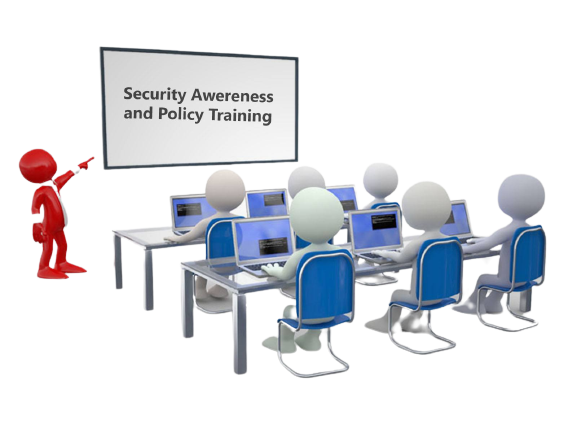Close
Close
Cybersecurity Employee Awareness refers to employees’ knowledge, understanding, and vigilance regarding cybersecurity practices, threats, and best practices within an organization. It involves educating and training employees to recognize and respond to potential cybersecurity risks in their day-to-day work activities. The goal is to create a well-informed workforce about cybersecurity and actively contribute to safeguarding the organization’s digital assets and sensitive information.
Why is Cybersecurity Employee Awareness Deployed?
1. Human Element: Employees are often the weakest link in an organization’s cybersecurity defense. Many cybersecurity incidents occur due to human error, such as clicking on phishing links or sharing sensitive information unintentionally.

2. Rising Cyber Threats: The threat landscape constantly evolves, with new types of cyberattacks emerging regularly. Employees must be updated on the latest threats and techniques attackers use to stay vigilant.
3. Compliance and Regulations: Organizations must comply with many industries with specific cybersecurity regulations. Employees’ awareness and adherence to these regulations are critical to avoiding penalties and legal issues.
4. Protection of Data and Assets: Organizations handle sensitive data, proprietary information, and customer data. Ensuring employees understand how to protect this data is essential for maintaining the organization’s reputation and trust.
5. Reducing Incidents: Educated employees are more likely to recognize and report suspicious activities. This early detection can prevent security incidents from escalating.
6. Cultural Shift: Creating a cybersecurity-aware culture can lead to more responsible digital behaviors among employees at work and in their personal lives.
Cybersecurity employee awareness programs typically include the following elements:
1. Training and Workshops: Regular training sessions and workshops to educate employees about cybersecurity threats, safe practices, and incident response procedures.
2. Phishing Simulation: Simulated phishing campaigns to assess employees’ susceptibility to phishing attacks and provide feedback for improvement.
3. Security Policies and Guidelines: Clear and easily accessible documentation outlining the organization’s cybersecurity policies, procedures, and guidelines.
4. Password Management: Guidance on creating strong passwords, using multi-factor authentication, and securely managing passwords.
5. Safe Web Browsing: Tips for identifying malicious websites and avoiding risky online behavior.
6. Social Engineering Awareness: Education on social engineering techniques used by attackers to manipulate employees into revealing sensitive information.
7. Data Handling: Guidelines for handling sensitive data, including encryption, data classification, and secure data disposal.
8. Device Security: Information on securing company-provided devices and practicing safe mobile and remote work.
9. Incident Reporting: Encouraging employees to promptly report any suspicious activity or potential security incidents.
10. Cultural Integration: Integrating cybersecurity into the organization’s culture through leadership support, rewards for good cybersecurity practices, and promoting a sense of shared responsibility.